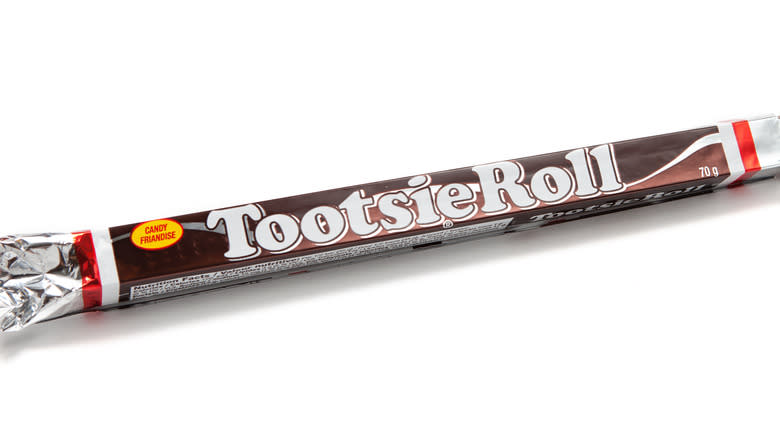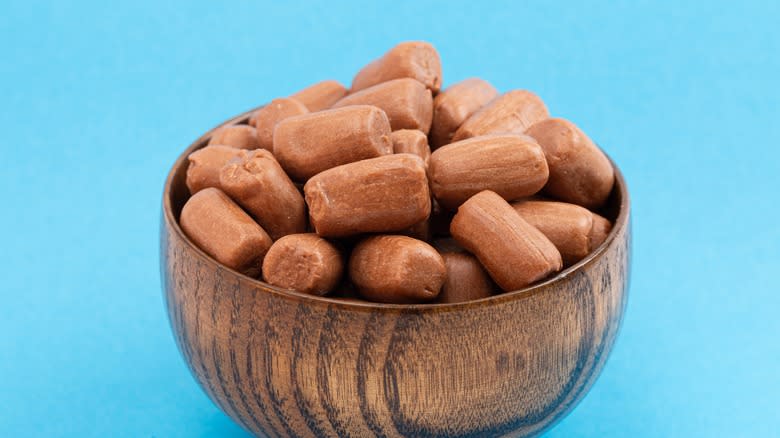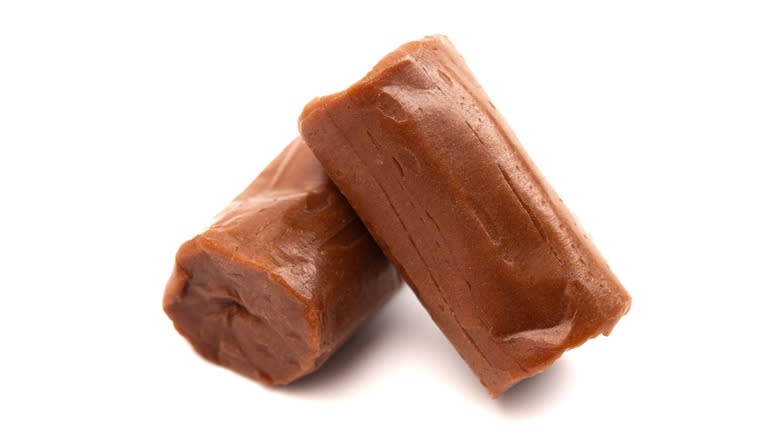The Sweet But Unconfirmed Story Of How The Tootsie Roll Got Its Name

If you often find yourself enjoying some candy to satisfy your sweet tooth, chances are you've come across a Tootsie Roll at some point. The chocolatey-flavored chewy candy is commonly found in the bottom of trick-or-treating bags, in jars of assorted sweets, or simply purchased as a sweet treat. But while you've been chewing on the taffy candy, you may have found yourself wondering where the name came from.
The story states that Leo Hirshfield, the man who invented the iconic Halloween candy, allegedly named the sweets after his daughter. When the treats were sold in 1896, Clara Hirshfield was 5 years old, and affectionately called "Tootsie" by her father. And although on the surface this story may be as sweet as the candy itself, it may not be entirely factual. In fact, there are actually plenty of holes in the history of the Tootsie Roll, regarding both the name of the candy and its origin.
Read more: 11 Discontinued Chocolates We Miss The Most
Where Did The Name Tootsie Really Come From?

The story of Hirshfield naming the candy for his daughter is even discussed on the Tootsie Roll Industries website. However, some have argued that the name of the candy instead came from the (possibly fictional) spokesperson of a very different product.
Hirshfield opened a New York factory in 1905 to produce Tootsie Rolls. After the candies proved popular, the candy company merged with Stern & Saalberg — another smaller candy company — in order to increase distribution. Prior to the merger, however, Stern & Saalberg had marketed its fast-setting, fruity gelatin desserts, called Bromangelon, in print advertisements with the help of a child mascot named "Tattling Tootsie."
Bromangelon was, coincidentally, also invented by Hirshfield, and it was first sold in 1895. Of course, Tattling Tootsie could have been based off Clara as well, since her father was the inventor of the dessert. But some have suggested that Tattling Tootsie was instead named for a child actress, or that she was simply a cartoon designed by a marketing team. The mascot was dropped as Bromangelon left store shelves, and Tattling Tootsie did not make a reappearance when Tootsie Rolls began to be sold. Still, the Tootsie Roll name may have been a nod to the previous product.
Why Did Hirshfield Start A Second Company?

But why did Hirshfield create a separate company to sell Tootsie Rolls, only to merge with Stern & Saalberg later on? The reason isn't totally clear. Some have even claimed that Tootsie Rolls haven't been around for quite as long as the company claims. The texture of the candy wasn't patented until 1907, and Stern & Saalberg began marketing the candies in 1909, after the patent was in place.
Regardless of why the merger took place, it proved to be successful for the business. The company went public on the stock market in 1922, and changed its name to Tootsie Roll Industries, Inc. in 1966. The company now produces other sweets like Andes Mints, Junior Mints, and Tootsie Pops — which require about 1,000 licks to reach the center.
It's likely that we'll never really know if Tootsie Rolls were named after Hirshfield's daughter, or the origins of the fictitious gelatin dessert spokesperson. Regardless of where the name came from, the candies have solidified themselves as an iconic sweet treat. They can even be used to make some tasty Tootsie Roll Cookies. The company now produces 64 million individually-wrapped Tootsie Rolls per day, proving that the candy's popularity has persevered over the years.
Read the original article on Daily Meal.

